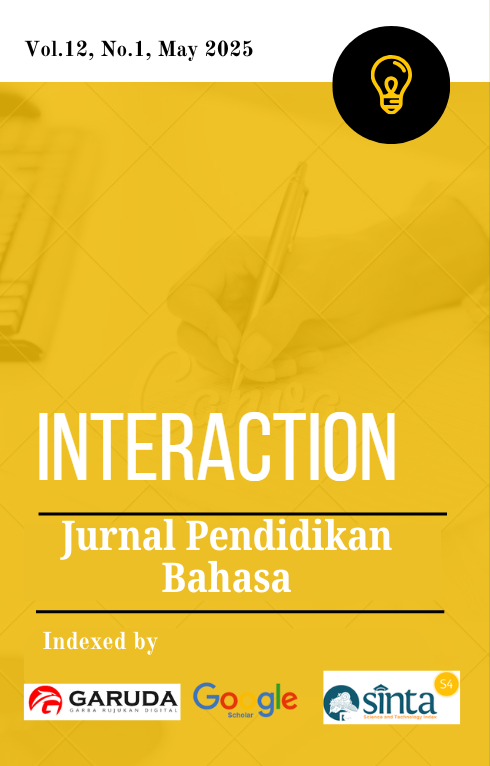The Use of Bugis Language Etiquette in Multicultural Families in Sidenreng Rappang Regency
DOI:
https://doi.org/10.36232/interactionjournal.v12i1.3923Keywords:
Etiquette, Bugis Language, Multicultural Families, Intercultural CommunicationAbstract
In the context of multicultural family life, language use serves not only as a means of communication but also as a reflection of the cultural values that exist within society. One form of such values is embodied in unggah-ungguh or the linguistic etiquette practiced in daily interactions. This study aims to describe the forms and patterns of Bugis language etiquette within multicultural families in Sidenreng Rappang Regency, with an emphasis on the application of the values of Sipakaraja (mutual respect) and Siri’ (a sense of shame as a means of upholding honor). The study is intended to provide an understanding of the preservation of Bugis cultural values through language practices in multicultural families, while also enriching the fields of sociolinguistics and cultural acculturation studies. The approach employed is descriptive qualitative, using Berry’s (1997) theory of acculturation as the analytical framework. Data were collected through observation, questionnaires, and in-depth interviews, and then analyzed using the Miles and Huberman model, which includes data reduction, data presentation, and conclusion drawing. The findings indicate that the forms of unggah-ungguh in multicultural families are reflected through traditional greetings such as “Puang” and “Daeng,” as well as other verbal and non-verbal etiquette such as the use of the polite expression “Tabe’,” soft tones of voice, and bowing gestures. The patterns vary according to the acculturation strategies adopted, such as adaptive and flexible patterns in the integration strategy, exclusive patterns in the separation strategy, and neutral or functional patterns in the marginalization strategy. This study involved data from 30 multicultural families, with integration being the most dominant acculturation strategy (21 families), followed by marginalization (7 families) and separation (2 families). The study affirms that the practice of unggah-ungguh is not merely a linguistic habit but a concrete representation of the process of acculturation and the preservation of local cultural values in cross-cultural communication.








